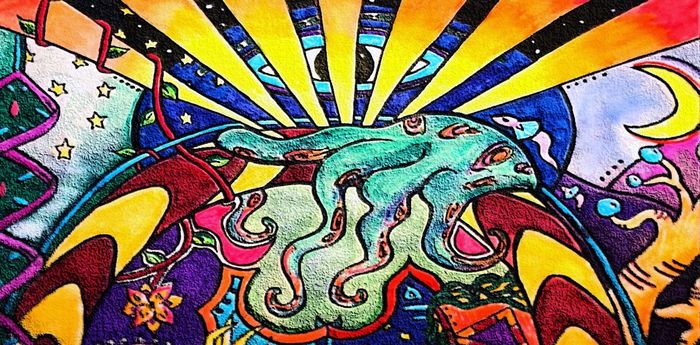Music as a medicine
Aneesah Bari explores the power of music and how music therapy can benefit individuals in a range of different settings

Music has a powerful capacity to both evoke and resonate with our emotions. Whether you have a dedicated playlist of songs to cry to, a go-to karaoke song for you and your closest friends, or a song that brings on a wave of nostalgia for a fond childhood recollection, the most memorable moments of our lives – or even just the day-to-day simplicities – often have a personal soundtrack that underlies them. Psychologists and other researchers have long recognized the dynamic potential of music and, since the 20th century, have operationalized this potential in the field of music therapy.
While the solo belting sessions that some of us engage in in the shower may well feel therapeutic, ‘music therapy’ refers to the therapeutic use of music in a much more formal sense (so no, unfortunately, on this particular occasion, we will not be exploring the versatile impacts of bathroom singing practices). More specifically, to take the definition from the American Music Therapy Association, music therapy is a field that employs “the clinical and evidence-based use of music interventions to accomplish individualized goals within a therapeutic relationship by a credentialed professional who has completed an approved music therapy program”.
Admittedly, this definition might seem a bit lengthy and vague to those new to the practice, so it might be helpful to conceptualize the practice simply as an alternative form of therapy. Credentialed music therapists undergo years of extensive training to establish both musical proficiency and a clinical foundation with a background knowledge of psychology, counselling, physiology and a whole host of other topics related to wellbeing and health. These professionals then materialize this knowledge into tailored musical interventions that meet the needs of the particular client or client base they are serving. These needs and groups of individuals are impressively diverse and multifaceted. For example, a music therapy device called the pacifier assisted lullaby (PAL) is used to help prematurely born infants develop the reflexes necessary to be able to be fed independently of a feeding tube and therefore leave the hospital, using musical cues to develop the sucking reflexes that allow for bottle-feeding or breastfeeding. At the opposite end of the age spectrum, music therapy has been shown to improve cognitive function and other factors in individuals with dementia.
“The scope of music therapy’s use in relation to mental health is broad and far-reaching”
Arguably one of the largest applications of music therapy, however, is its use in improving mental health, whether this takes the form of general improvements in mental wellbeing, or the amelioration of severe mental illness. Again, the scope of music therapy’s use in relation to mental health is broad and far-reaching. One of its most interesting applications in this regard is to a setting that is considerably isolated from the broader social context- the prison setting. It is well documented that individuals who are incarcerated experience mental health challenges as a function of this incarceration. The prison setting is one that imposes entirely new social conditions. Individual autonomy is challenged, the roles that incarcerated individuals gained a sense of purpose from outside the prison context are stripped away, and an entirely foreign social hierarchy is imposed. This hierarchy places incarcerated individuals on the subordinate side of a power dynamic between the prison staff and prisoners- one that has the potential to be deeply dehumanizing. Hierarchies and conduct rules are also established between incarcerated individuals, many of whom report, for example, having to maintain a sort of emotional rigidity in public spaces to avoid derision from others. What’s more- this rather jarring social environment is exacerbated by the fact that connections to the outside world become limited or even severed. In general, individuals who are incarcerated have to adjust themselves to an entirely different landscape, and for many (if not most) individuals, the adjustment takes a toll. Several researchers have noted that music therapy helps contend with some of these challenges. Music therapy can not only promote general improvements in anxiety, depression, self-esteem and other aspects of mental health in prison, but the use of music as a therapeutic medium also helps to mitigate some of the sharp contrast between the prison context and the outside world, for example, by serving as a metaphorical ‘bridge’. The same transcendent capacity that music harbors that might have allowed you to nostalgically ‘transport’ yourself away during the preceding year’s lockdowns to, perhaps, a fond recollection of your last pre-pandemic party, can serve as a way to allow individuals in prisons to temporarily ‘escape’ from their present circumstances and feel more connected to the broader social context that they have been removed from. Therefore, by gaining the opportunity to forge these connections through music therapy, individuals in the prison context might gain an opportunity to feel a renewed sense of connectedness to the people, places and memories that these individuals are necessarily removed from.
“Music therapy can not only promote general improvements in anxiety, depression, self-esteem and other aspects of mental health in prison, but the use of music as a therapeutic medium also helps to mitigate some of the sharp contrast between the prison context and the outside world”
As we all slowly come to grips with a global pandemic that has, in some ways, made us all feel more disconnected, to take an empathetic tone, the benefits of music therapy in the prison context are surely ones that can resonate on some level. They constitute impactful findings in an even more impactful and interesting research domain, one that hopefully inspires us all to reconsider the ways in which music can be utilized as a powerful medium for change.
 Interviews / You don’t need to peak at Cambridge, says Robin Harding31 December 2025
Interviews / You don’t need to peak at Cambridge, says Robin Harding31 December 2025 Comment / What happened to men at Cambridge?31 December 2025
Comment / What happened to men at Cambridge?31 December 2025 News / Unions protest handling of redundancies at Epidemiology Unit30 December 2025
News / Unions protest handling of redundancies at Epidemiology Unit30 December 2025 News / Varsity’s biggest stories of 202531 December 2025
News / Varsity’s biggest stories of 202531 December 2025 News / Downing investigates ‘mysterious’ underground burial vault 29 December 2025
News / Downing investigates ‘mysterious’ underground burial vault 29 December 2025










